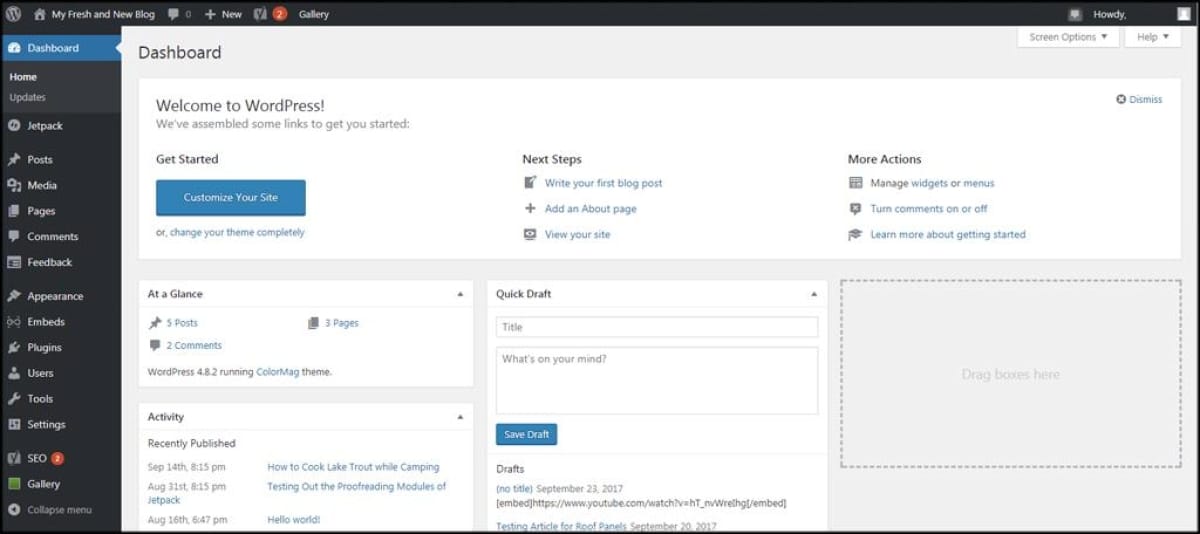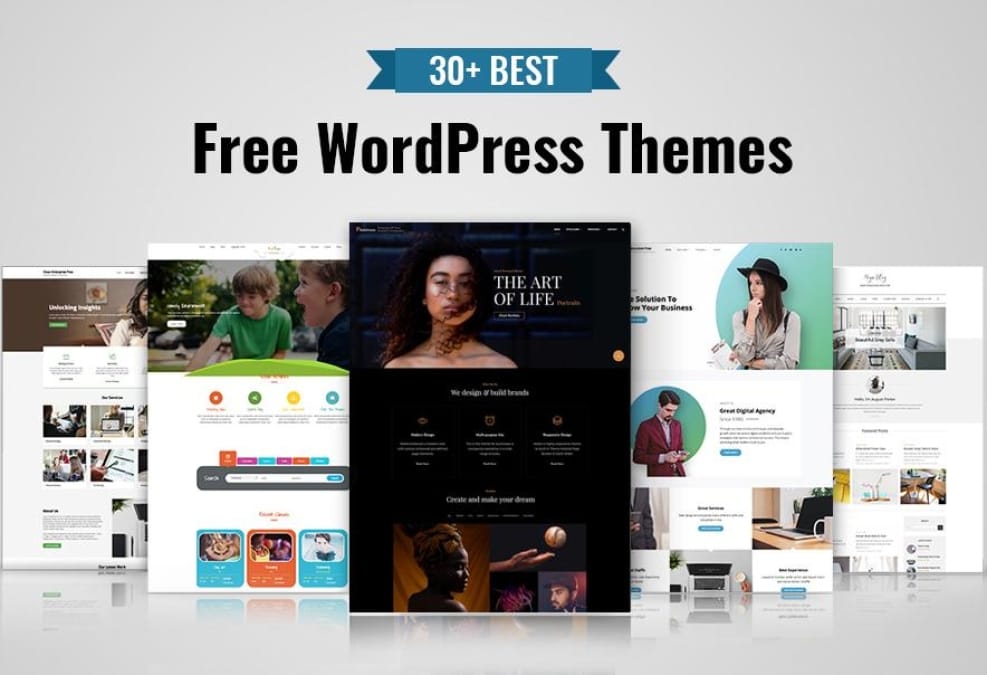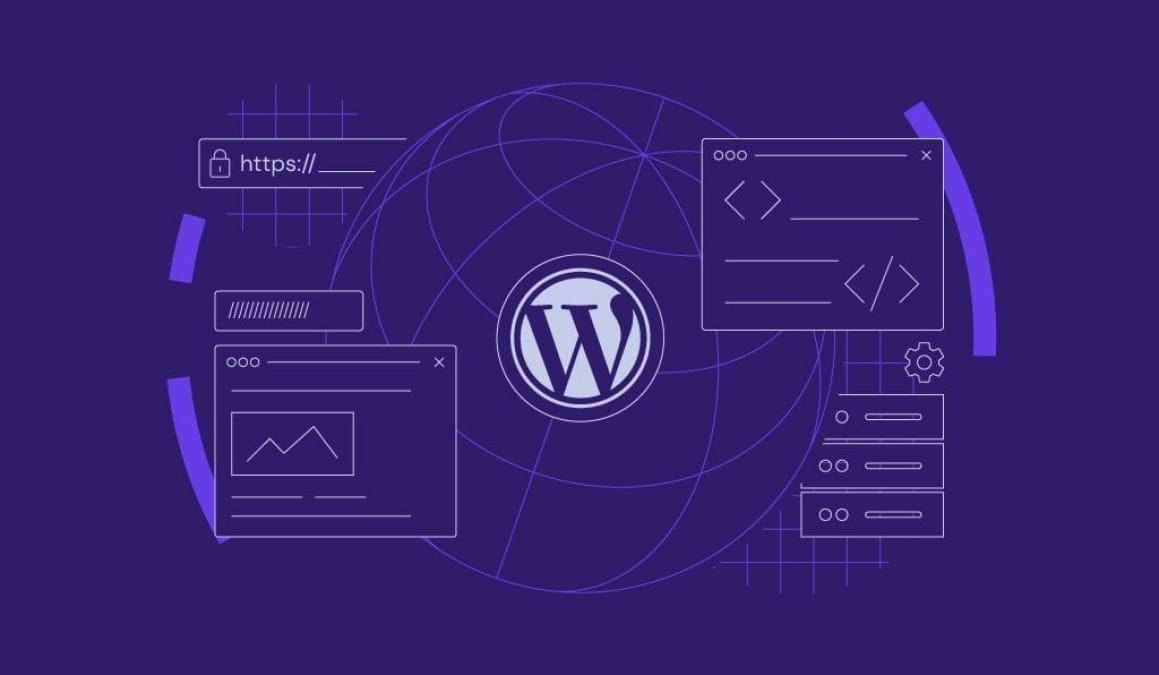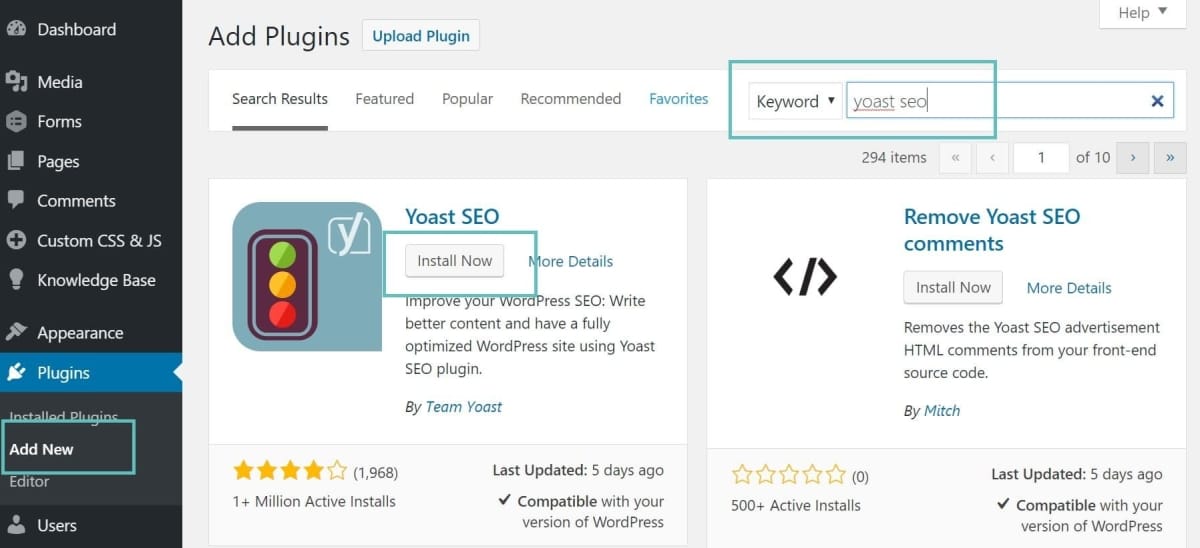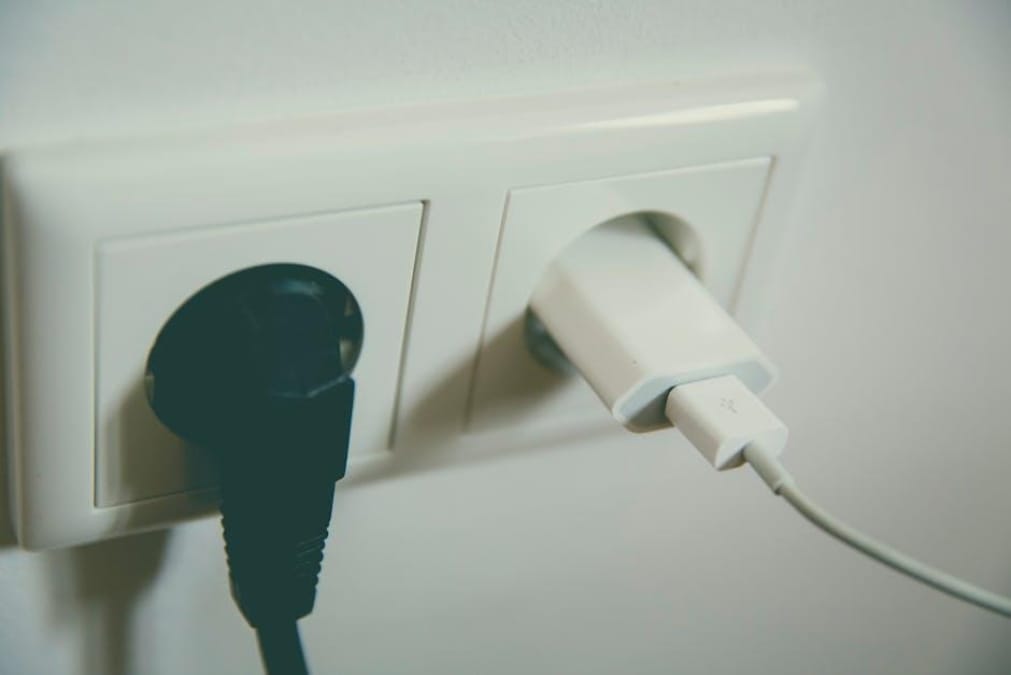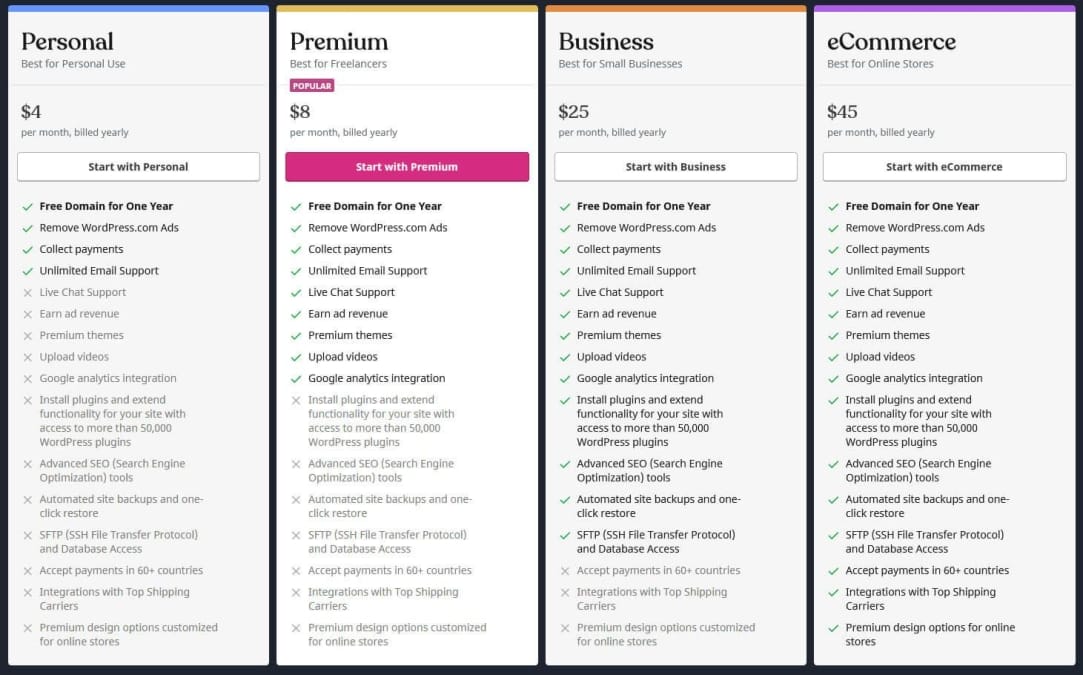When it comes to running a WordPress site, it might be easy to focus on flashy themes and catchy content, but here’s one thing that often gets overlooked: how you organize your content. Think of your site as a big, overflowing toolbox. If you just toss everything in there without any rhyme or reason, you’ll end up spending way more time digging around than actually getting things done. That’s where categories come into play. They’re like labels for your tools, helping you find exactly what you need when you need it.in this article, we’ll dive into why organizing your WordPress site with categories is so vital. Whether you’re blogging for fun, promoting your business, or sharing your expertise, a little association can go a long way in making your site more user-kind, improving your SEO, and keeping both you and your visitors happy. let’s get started!
Table of Contents
- The Importance of categories for Easy Navigation
- How Categories enhance Your Content Strategy
- tips for Creating Effective Categories
- common Mistakes to Avoid When Organizing Categories
- keeping Your Categories Fresh and Relevant
- Q&A
- To Wrap It up
The Importance of Categories for Easy Navigation

When you’re scrolling through a blog,you wont to find what you’re looking for quickly,right? That’s where categories come in. They’re like the handy labels on file folders. By grouping related posts together, categories help readers navigate your site without feeling like they’re wandering in a maze. Good organization means visitors stick around longer, and that’s always a win.
Imagine someone lands on your site and sees a category list right there on the sidebar. They can click on “Travel,” as a notable example,and boom! They’re presented with a bunch of exciting travel pieces instantly. This not onyl saves them time but also encourages them to explore more of your content. If they’re really into hiking, and they find a few posts there, they might be tempted to subscribe or share thier favourite ones! It creates a little community vibe.
Plus, having categories makes it easier for you too. With a well-organized structure, you can keep track of which topics you write about most and which ones might need a bit more love.This can definitely help you brainstorm new content ideas and spot trends in what your audience is interested in. Over time, you can build a richer blog that keeps your readers coming back for more.
Here’s a quick look at how categories can make your life easier:
| Category Benefit | Impact on Readers |
|---|---|
| Improved Navigation | Readers find content faster |
| Enhanced User Experience | Readers stay engaged longer |
| Content Strategy Insights | Helps you write more relevant posts |
How Categories Enhance Your Content Strategy

Let’s be real: just throwing a bunch of posts out there without any organization can make your site feel like a cluttered garage. That’s where categories come into play. They act like the labels on boxes, telling visitors exactly what they can expect to find. When you categorize your content well, it not only helps your readers navigate your site, but it also lets you create a clearer structure for your ideas. This way, folks can easily jump into the topics that interest them without having to sift through a mountain of unrelated posts.
Think of it this way: categories provide a roadmap.When you have a well-defined list of categories, it pops out to your audience and tells them exactly what’s available. For example, if you run a cooking blog, you could cover categories like “Quick Meals”, “Healthy Eating”, and “Desserts”. This not only helps your readers find what they want but also keeps them on your site longer. The more time they spend browsing, the better the chances they’ll become loyal followers.
Another bonus? Categories can be super helpful for your SEO strategy. Search engines love organized content,and having clear categories makes it easier for them to index your posts. when you structure your posts under specific categories, you’re giving Google a better idea of what your site is all about.Plus, if someone searches for *“quick healthy meals”*, and you’ve got posts tagged under those categories, you’re much more likely to show up in their results. Talk about a win-win!
Last but not least, categories can definitely help you build a community. By consistently posting in certain categories, you not only attract readers who are interested in those topics, but you can also encourage conversation.When people see a category they love, they’re more likely to comment, share, and engage with your content. So, the more organized you are, the more you invite interaction, creating a space where your audience feels pleasant chiming in. It’s all about building those connections and keeping the conversation going!
Tips for Creating Effective Categories

when you’re setting up your WordPress site, think about your categories like the aisles in a grocery store. You want stuff organized so your visitors can find what they need without wandering around. Start by keeping it simple and relevant. Focus on key topics that relate to your content. Instead of creating a ton of categories, aim for a handful that cover the major themes of your site. This makes it easier for readers and helps you stay on track with your content.
Next, consider using subcategories to add more detail. Such as, if you have a category for “Travel,” you can break it down into subcategories like “Domestic” and “International.” This helps visitors drill down to exactly what they’re looking for without getting overwhelmed.Just be careful not to go overboard – too many layers can confuse people more than help them.
It’s also an excellent idea to keep your category names clear and straightforward. Use everyday language that your audience can easily understand. Rather of fancy jargon or clever puns, opt for words that tell exactly what visitors can expect. Such as, instead of “Adventures in Cooking,” just go with “Recipe Ideas.” This clarity not only helps your visitors but also boosts your SEO efforts.
Lastly, don’t forget to review your categories regularly. As your blog grows, some categories might become less relevant while new topics emerge. Periodically checking in on your categories lets you make adjustments and keep your site fresh. You want to create a space where users find all the info they’re after, so adapting your categories as needed is key to maintaining an organized and user-friendly habitat.
common Mistakes to Avoid When Organizing Categories

When you’re diving into organizing categories for your WordPress site, it’s easy to trip up without realizing it. One of the biggest blunders is going overboard with the number of categories you create. Sure, it’s tempting to break everything down into tiny slivers, but having too many categories can confuse your visitors. They might spend more time trying to find what they need than actually enjoying your content.Stick to a handful of broad categories that cover the major topics you want to discuss.
Another mistake is not thinking about how these categories will interact with each other. Categories need to make sense within the context of your site and with each other. If you’ve got categories that overlap or even contradict each other, it can make things way more complicated. Instead,consider creating a clear hierarchy. Such as, if you have a main category like “Travel,” your subcategories could include “Destinations,” “Tips,” and “travel Gear.” This keeps things tidy and easy to navigate.
Don’t forget about consistency, either. When you’re naming your categories, make sure you stick to the same style and tone. It can get confusing if some categories are capitalized while others aren’t, or if you decide to mix up terminology.Your goal is clarity, so using the same terminology can really help streamline the experience for your visitors. Think about these points as you create your category names:
| Consistent Naming | Examples |
|---|---|
| Use the same format | Travel tips, travel destinations |
| Avoid slang or jargon | Family Travel, Solo Travel |
| Stick to clear descriptions | Healthy Recipes, Budget Tips |
Lastly, don’t forget to revisit your categories after some time. What makes sense today might not be relevant down the road. As you add more content, it’s perfectly fine to shuffle things around and even eliminate or combine categories. Regularly reviewing your structure not only keeps your site organized but also ensures that your users have the best experience possible. taking a little time to assess can save a lot of headaches down the line.
Keeping Your Categories Fresh and Relevant

To keep your categories from going stale, you’ve got to pay attention to what’s going on in your niche. Trends change, and so do your audience’s interests. Regularly check which topics are getting the most buzz and consider adding new categories that reflect these shifts. this way, your site remains vibrant and engaging, drawing readers back for more.
One effective way to refresh your categories is by merging similar ones. If you notice redundancy, why not combine them? It makes navigation smoother for your users and keeps things tidy. Plus, having fewer, but more meaningful categories can help guide visitors straight to the content they’re really looking for.Remember,simplicity is key!
Also,don’t forget to listen to your audience. Their feedback can be a goldmine for keeping your categories fresh. Keep an eye on comments and messages to see if there are new topics they’re excited about. You can also run quick polls or surveys to gauge interest. Engaging with your audience not only helps your categories but builds a community vibe.
consider revisiting your older posts and seeing if they fit into your current categories. Some gems might be hidden away under outdated or irrelevant tags. A simple reassessment of your content can breathe new life into old posts. make tables or lists for easy organization, and watch as your site becomes an even more user-friendly experience.
Q&A
Q&A: Why Organizing Your WordPress Site with Categories Matters
Q: What are categories in WordPress, and why should I care about them?
A: Great question! Categories in WordPress are like the folders on your computer— they help you sort and organize your posts. Rather of throwing everything into one giant pile, you can break it down into smaller, more manageable sections.This way, when people visit your site, they can easily find what they’re looking for. Plus, it makes your site look more professional and user-friendly.
Q: How do categories actually help my readers?
A: Think of your visitors. When they land on your site, they don’t want to sift through endless lists of posts. Categories make it super easy for them to navigate and find specific topics. As a notable example, if you have a blog about food, having categories like “Recipes,” “Cooking Tips,” and “Food Reviews” helps readers jump straight to what interests them. Less digging means a better experience!
Q: Can organizing with categories really boost my SEO?
A: Yup! When you use categories effectively,you’re actually helping search engines understand your site better. This can lead to improved search rankings,which means more eyeballs on your content. It’s like giving Google a map to your site! When content is categorized and linked properly,it makes it easier for search engines to see what you’re all about.
Q: Is there such a thing as too many categories?
A: Absolutely! While categories are helpful, having too many can confuse both your readers and search engines. aim for a balanced number. Ideally, you want a few broad categories that cover your main topics. If you find you have too many categories, it might be time to combine some or create subcategories for the more niche topics.
Q: Are tags the same as categories?
A: not quite! Think of categories as your main subjects, while tags are more like keywords that describe specific details within a post. For example,if you wrote a recipe for chocolate chip cookies,the category could be “Baking,” but your tags could include “chocolate,” “cookies,” and “desserts.” Both are important, but they serve different purposes!
Q: How do I set up categories on my WordPress site?
A: It’s pretty simple! Just head over to your WordPress dashboard, click on “Posts,” then “Categories.” There, you can add new categories, give them names, and even create subcategories if you want. Once you have them set up, remember to assign your posts to the relevant categories when you publish. It’s a quick step that pays off in the end!
Q: What’s the takeaway? Why should I start organizing my site now?
A: Organizing your WordPress site with categories is a game-changer! It enhances user experience,improves SEO,and keeps your content neat and tidy. So don’t wait around! Start categorizing today,and you’ll see the difference it makes for both you and your readers. Plus,a well-organized site just feels good to manage!
To Wrap It Up
In wrapping things up,organizing your WordPress site with categories is like clearing the clutter from your garage – it just makes everything easier. when you take the time to sort your content, you’re not just helping yourself find what you need faster; you’re also making it a breeze for your visitors to navigate your site. Trust us, nobody wants to sift through a jumble of posts to find the one thing they came for.
So, whether you’re running a blog, a business site, or anything in between, don’t underestimate the power of a well-organized system. Your readers will appreciate it, and you might even find that it helps boost your traffic over time. Remember, a little bit of structure goes a long way. Now,go get those categories sorted,and watch your site transform!

